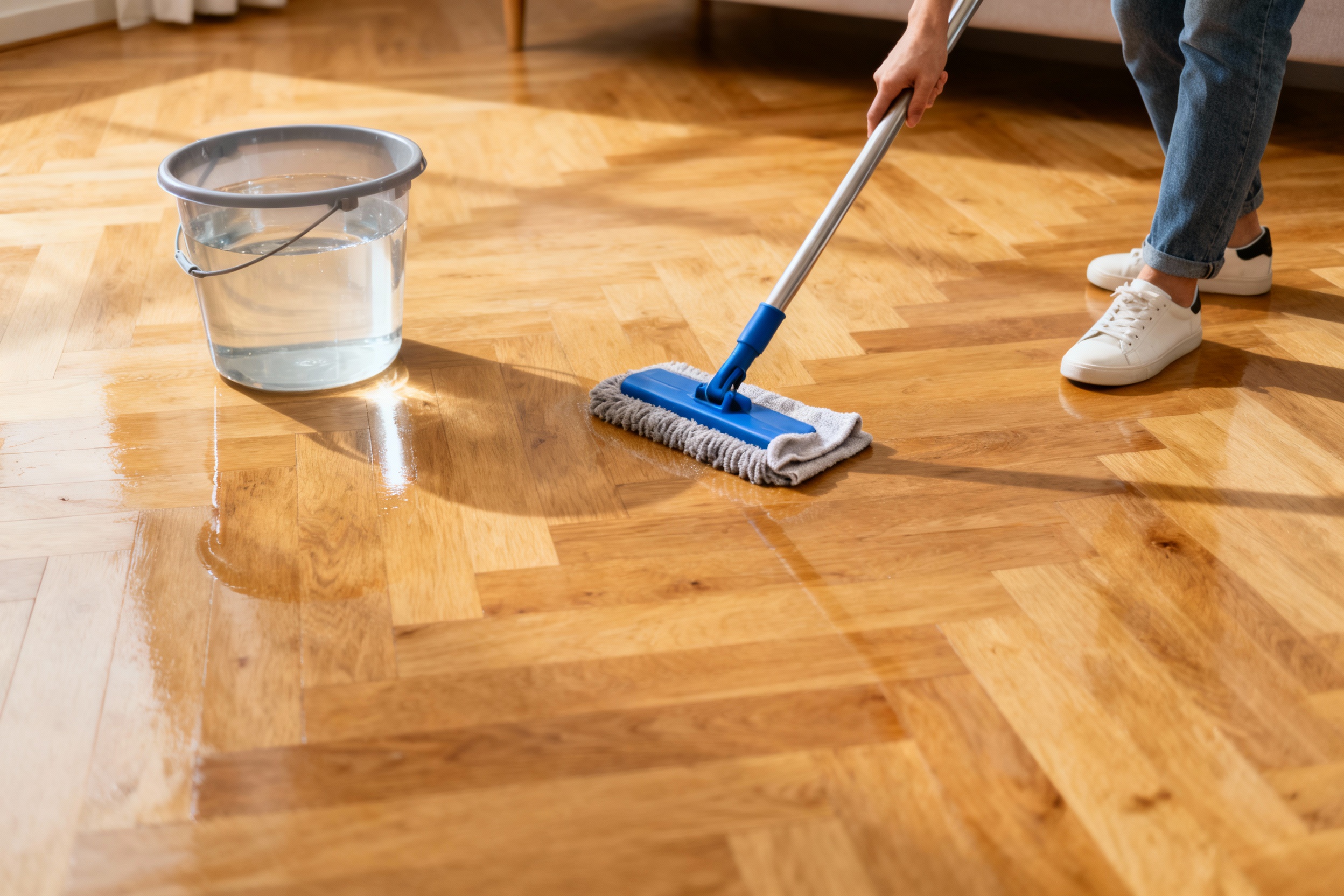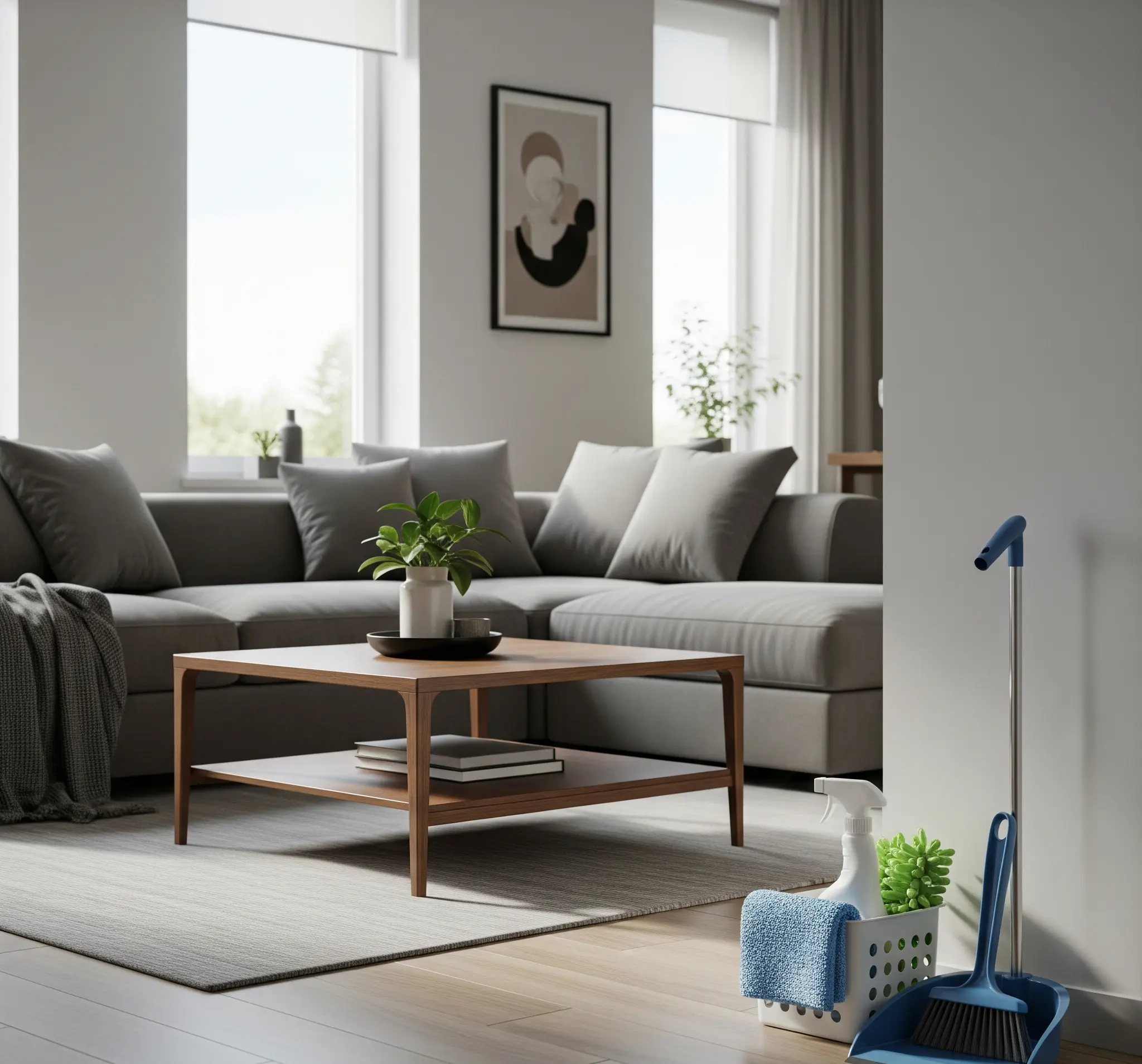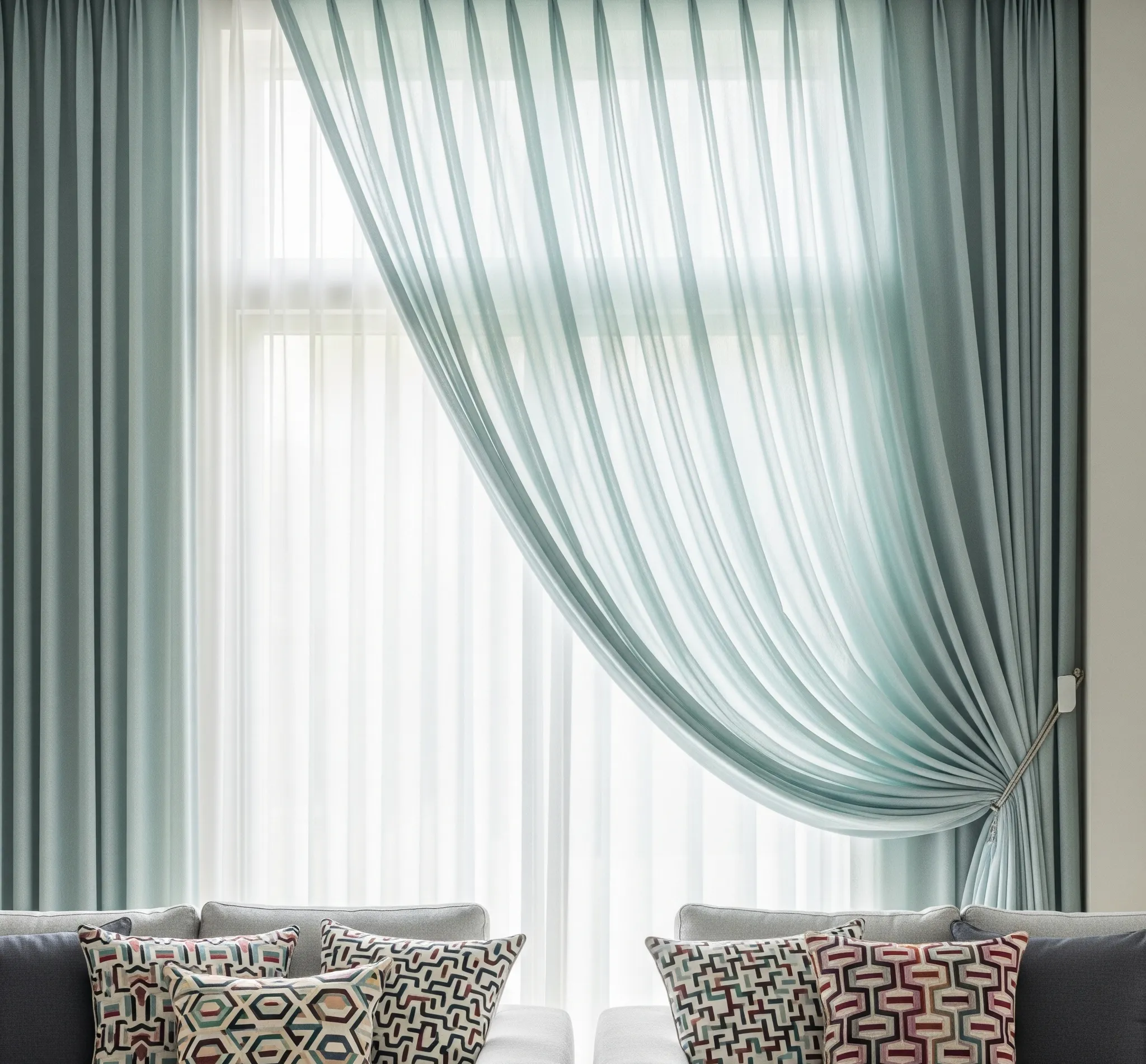Your hardwood floors look amazing—right up until they don’t. Dust, smudges, mystery sticky spots (looking at you, jelly toast), and those dreaded scratches can turn a glossy showpiece into a dull, streaky mess. The kicker?
One wrong cleaner can wreck the finish. Let’s keep the shine, skip the stress, and clean your hardwood floors the right way—without sabotaging the finish.
Know Your Finish (It Dictates Everything)
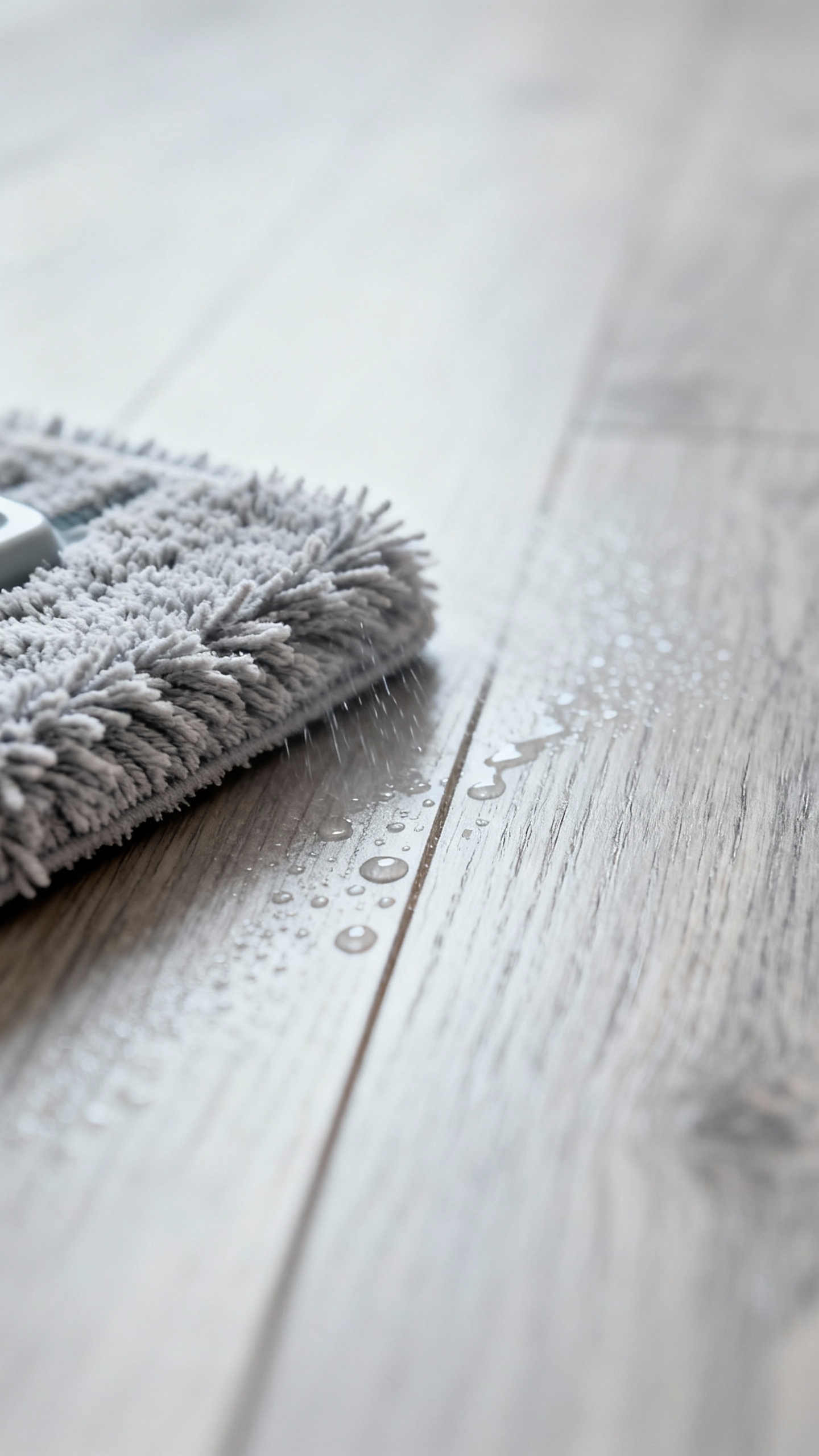
Not all hardwood is the same, and the finish changes the rules. You can’t just grab a random cleaner and hope for the best.
That’s how you end up with cloudy residue or dull patches. Common finishes you’ll see:
- Polyurethane (surface-sealed): Most modern floors. Water-resistant, shiny or satin. These like gentle, water-based cleaners.
- Oil-penetrating or hardwax: The natural, matte look.
Needs specific soap or oil-replenishing products.
- Waxed floors: Old-school charm. You must avoid water-heavy mopping and anything that strips wax.
How to tell what you have
Rub a small spot with a dab of paint thinner on a cloth (in a hidden area). If it dulls or the finish softens, you probably have wax.
If nothing happens, it’s likely polyurethane. Not sure? Check the manufacturer’s care guide or ask a pro. IMO, guessing leads to cleaning roulette—hard pass.
The Daily-and-Weekly Game Plan (A Little Often Beats A Lot Rarely)
You don’t need to deep-clean every day.
You just need a system that keeps grit from turning your floor into sandpaper. Daily (or every couple of days):
- Dust mop or vacuum: Use a soft microfiber mop or a vacuum with a hard-floor setting and a soft roller. Avoid beater bars.
- Spot-clean spills ASAP: Blot liquids, don’t smear. Water is the enemy when left to sit.
Weekly:
- Microfiber damp mop: Use a well-wrung microfiber pad and a pH-neutral cleaner designed for hardwood (Bona, Bruce, or manufacturer-approved solutions).
- Change pads as you go: Dirty pads = streaks and fine scratches.
Why grit matters
Those tiny dust particles act like tiny knives.
Every step drags them across the finish. You won’t notice at first, then one day your floor looks “tired.” Prevent it. It’s easier than undoing damage.
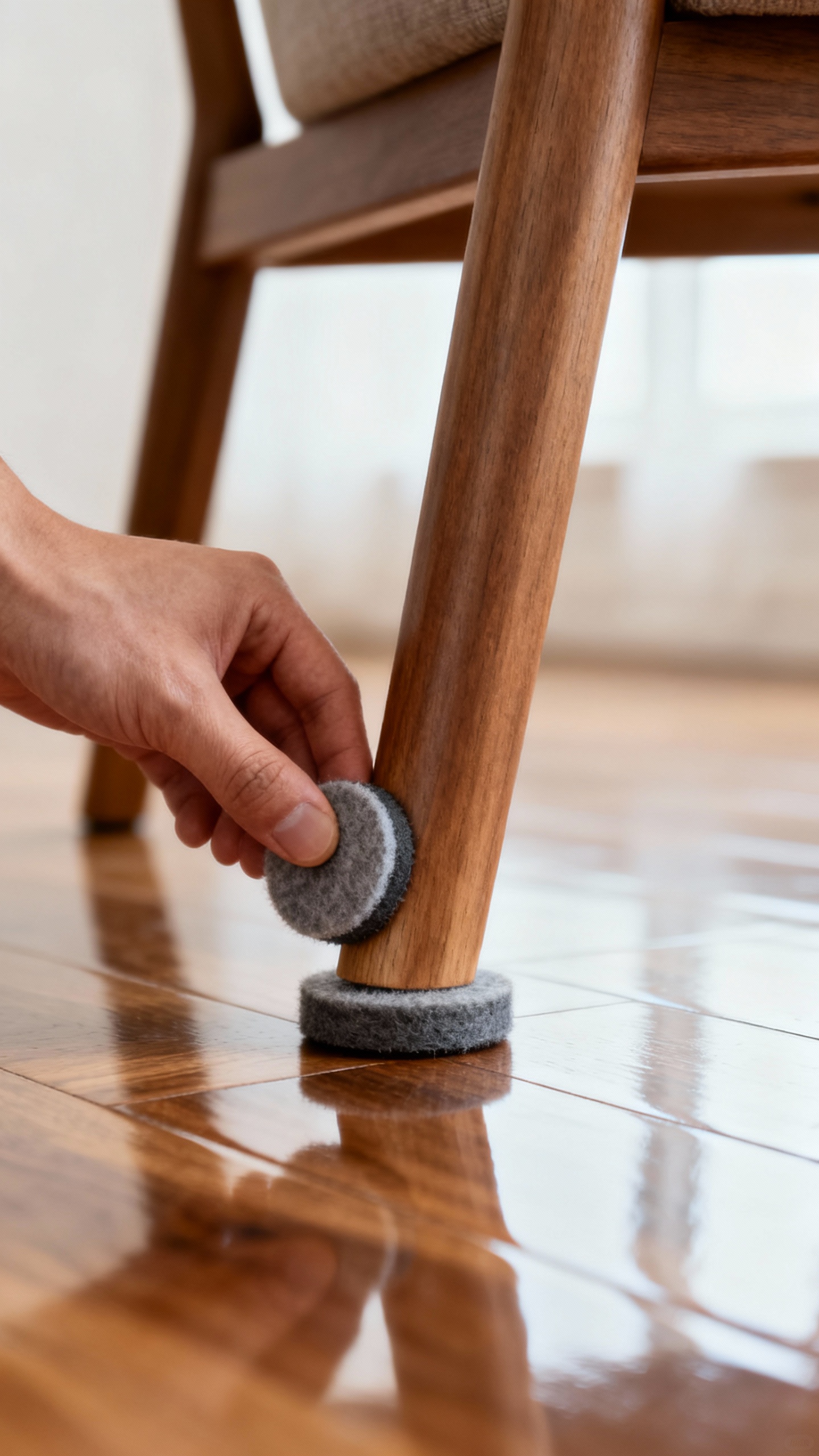
What To Use (And What To Never, Ever Use)
Let’s keep this super clear.
Some products love hardwood. Others nuke the finish. Safe, finish-friendly options:
- pH-neutral hardwood cleaners (spray-and-wipe style).
- Microfiber mop pads that you wash after each use.
- Distilled water if your tap water leaves streaks.
Hard no’s (seriously, don’t):
- Vinegar (even diluted). It dulls polyurethane over time.
FYI: “natural” doesn’t equal “safe.”
- Steam mops. Heat + moisture = finish damage and potential cupping.
- Wax or oil on polyurethane floors. You’ll create buildup and slippery chaos.
- Abrasive pads or powders. Scratches galore.
- “All-purpose” or “multi-surface” cleaners with ammonia or strong solvents. They haze the finish.
The Right Way to Mop (Without Soaking the Wood)
You want clean—without flooding your floor. Think “damp,” not “wet.”
- Vacuum or dust first. Remove grit so you don’t drag it around.
- Lightly mist the cleaner on the floor or directly on the microfiber pad.
- Mop in the direction of the wood grain. It hides faint streaks and helps lift dirt from seams.
- Rinse or swap pads when they look dirty.
- Dry any lingering moisture with a clean towel. Don’t let puddles vibe on your floor.
If you have oil-finished floors
Use a soap for oiled wood or the specific oil-care product your brand recommends.
You’ll occasionally need a light re-oil in high-traffic zones. It’s normal maintenance, not failure.
Stains, Scuffs, and “Help, My Kid Dragged a Chair”
Stuff happens. You can fix most oopsies without panic. Scuffs (black marks from shoes):
- Rub gently with a slightly damp microfiber cloth.
- For stubborn scuffs, use a melamine sponge very lightly.
Test first—go easy.
Sticky or oily spots:
- Use hardwood cleaner on a cloth, not directly on the spot.
- Wipe and buff dry. Repeat if needed.
White water rings (on waxed or oiled floors):
- Try a tiny dab of mineral oil or specialized spot repair. Rub gently with a soft cloth.
Fine scratches in the finish (not through to the wood):
- Use a manufacturer-approved touch-up pen or blend stick in your floor color.
- Camouflage, don’t overwork it.
Less is more.
When to call a pro
If you see gray patches (water reached the wood), deep gouges, or widespread dullness, you might need a screen-and-recoat or refinishing. A quick eval can save you from bigger, pricier problems later.
Preventive TLC (Make Cleanings Easier and Less Frequent)
You want fewer messes and less damage? Set up your floor for success.
- Mats at every entrance. Outside and inside.
Trap dirt before it travels.
- Felt pads on furniture feet. Replace when they flatten or collect grit.
- No shoes indoors (or at least no stilettos). Your floor will thank you.
- Control humidity (35–55%). Wood likes consistency.
Too dry = gaps. Too humid = cupping.
- Lift, don’t drag. Use sliders when moving anything heavy.
Pets and floors can coexist
Trim nails, keep a towel by the door for wet paws, and choose rugs with natural rubber pads (not sticky PVC that can discolor finishes). IMO, a stylish runner is just armor with better branding.
Deep-Cleaning Without Damage
Sometimes regular mopping won’t cut it—especially in kitchens and hallways.
Do a smarter deep-clean.
- Vacuum thoroughly. Use crevice tools along baseboards and under cabinets.
- Use a slightly stronger (still pH-neutral) cleaner designed for buildup. Follow directions exactly.
- Scrub with a microfiber pad or a soft-bristle brush on hands and knees for problem areas.
- Work in sections so cleaner doesn’t dry on the floor.
- Wipe dry immediately.
If you see cloudy residue, you might have old product buildup. A manufacturer-approved remover can help.
Avoid DIY cocktail experiments unless you enjoy chaos.
FAQ
How often should I mop hardwood floors?
Weekly for most homes, twice a week in high-traffic zones like kitchens or entryways. Dust or vacuum more frequently. Frequency matters less than consistency—light, regular care beats sporadic deep cleaning.
Can I use vinegar or dish soap?
Skip vinegar—it etches finishes over time.
Dish soap might work in a pinch if extremely diluted, but it can leave film. Use a cleaner labeled for hardwood. It’s not marketing fluff; it’s chemistry.
Are steam mops safe for hardwood?
Nope.
Steam drives heat and moisture into seams and can blister or cloud finishes. Even “sealed” floors can suffer. Keep steam mops on tile where they belong.
What if my floors look dull and streaky?
You likely have residue from the wrong cleaner or too much product.
Switch to a pH-neutral hardwood cleaner, use clean microfiber pads, and consider a one-time residue remover approved by your floor’s manufacturer.
Do I need to polish or wax my floors?
Only if you have wax-finished floors. Polyurethane floors don’t need wax, and polish can cause buildup or slipperiness. If you want more sheen on poly floors, ask about a professional screen-and-recoat instead.
How do I protect floors under rugs?
Use rugs with natural rubber or felt pads.
Avoid cheap PVC or latex pads—they can discolor or imprint the finish. Rotate rugs occasionally so sunlight doesn’t create tan lines.
Conclusion
Hardwood floors don’t demand fancy rituals—they just need the right habits. Identify your finish, clean lightly but regularly, and keep water and harsh chemicals away.
Add a few smart protections, and you’ll keep that glow for years. Easy, right? Now go boss those floors like the responsible adult you pretend to be.
FYI: your future self will be very pleased.
